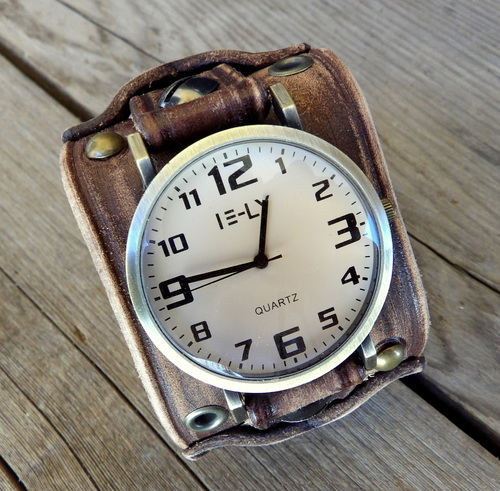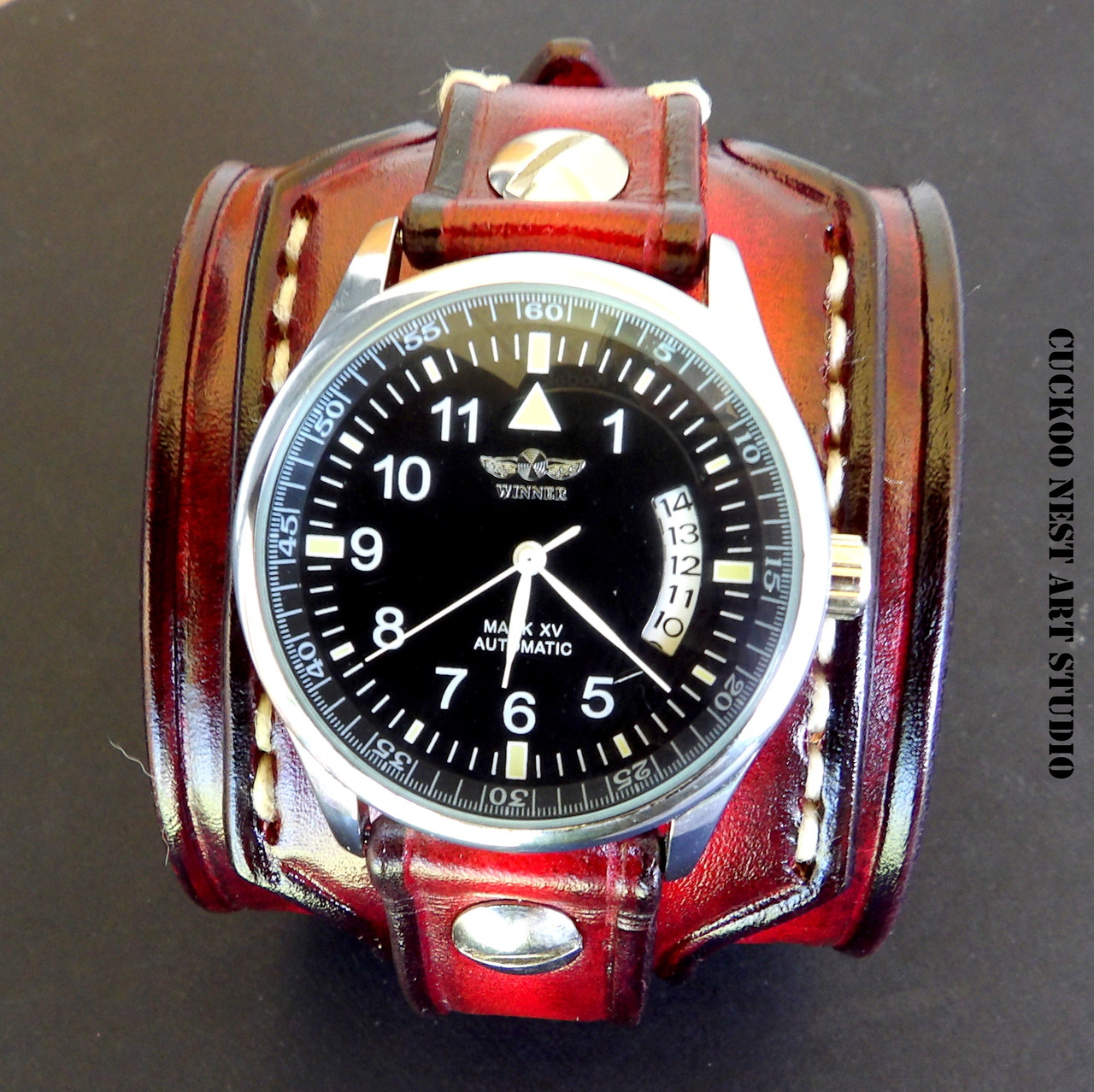Posted by Cuckoo Nest Art Studio on Feb 2nd 2018
The Analog Watch on Your Leather Watchband
 Digital watches are older than you think. The first company
to make a digital clock was a German factory. This happened in 1893. However, the
earliest patent for a digital alarm clock wasn’t filed until 1956.
Nevertheless, analog watches remained popular then and can still be found on
many watches today. In this article, we’ll explore the analog watch on your
leather watchband.
Digital watches are older than you think. The first company
to make a digital clock was a German factory. This happened in 1893. However, the
earliest patent for a digital alarm clock wasn’t filed until 1956.
Nevertheless, analog watches remained popular then and can still be found on
many watches today. In this article, we’ll explore the analog watch on your
leather watchband.
How the Analog Watch Got Its Name
You should know that the name ‘analog watch’ didn’t exist until after digital watches become popular. Before, it was just called a watch. However, the appearance of digital watches made it necessary to distinguish between the two. An analog watch has a traditional clock face instead of a digital display. The term ‘analog’ strictly refers to the design of the display. That means analog watches can use different timekeeping technology (Quartz or mechanical – more on that shortly).
How the Analog Watch Displays Time
An analog watch displays time by using a circular dial with one, two, or three rotating hands. One hand shows the hour and moves to the next big position on the dial within 60 minutes. One hand indicates minutes and moves every 60 seconds. Then there is the third hand that indicates the number of seconds passed. This hand is continuously moving.
An analog watch has 12 numbers printed on them. The 6 and 12 are aligned with the watchband, and the 12 should always be at the top when you look at the watch. Some watches may use Roman numerals to display the numbers; others only display some of the numbers. At a minimum, the 12 is marked in some fashion to help you wear the watch and tell time.
The displays can also vary widely in their size. A bigger watch face may be more likely to include all the numbers as well as the position of each of the minutes. A watch for a child may also indicate the numbers of the minutes to help them learn to tell time. Of course, once you know how to use an analog watch to tell time, you don’t need the numbers for reference.
Analog vs. Digital

A digital watch displays the time using numbers instead of hands and a circular display. It will display the hour first, and then the minutes separated by a colon. Digital watches became popular in the 1980s as the technology improved. Yet, whether you wear a digital or analog watch is entirely up to you. Both models can tell the time with great precision.
Both digital and analog watches can have additional features. For example, they may be waterproof or have the option to illuminate the display with a light. You can even find combination watches. That’s where the main display is in analog form, but it also includes a small digital display at the bottom of the watch.
Of course, watches can also be used for other functions. In addition to telling time, they can be used as a stop watch, thermometer, and even to read your pulse. Of course, added functionality must be accessible. Therefore, you’ll find that those watches have buttons on the side to allow you to switch the display as necessary.
How to Use Your Analog Watch as a Compass
Did you know that you can use your analog watch to locate North and South? The sun moves across the sky within a 24-hour period. The hands of your watch perform one complete rotation in half the time. When you point the hour hand towards the sun, the halfway point between the hour hand and the 12 o’clock will indicate where South is. If you’re located in the Southern hemisphere, the 12 must be pointed toward the sun. The point halfway between the hour hand and 12 o’clock will indicate north. Of course, you have to make allowances for daylight savings time, during which you would use 1 o’clock instead of 12 o’clock.
Quarts vs. Mechanical Watches
While most people differentiate between analog and digital watches, the real question is whether you have a Quartz or mechanical watch. A Quartz watch is powered by a battery. With these watches, you can get to the batter at the back of the watch face and change it out. On the other hand, mechanical watches are powered by regulating the release of energy from a wound spring. This mechanical action can occur in two different ways: the watch can be self-winding or it has to be wound up manually.

